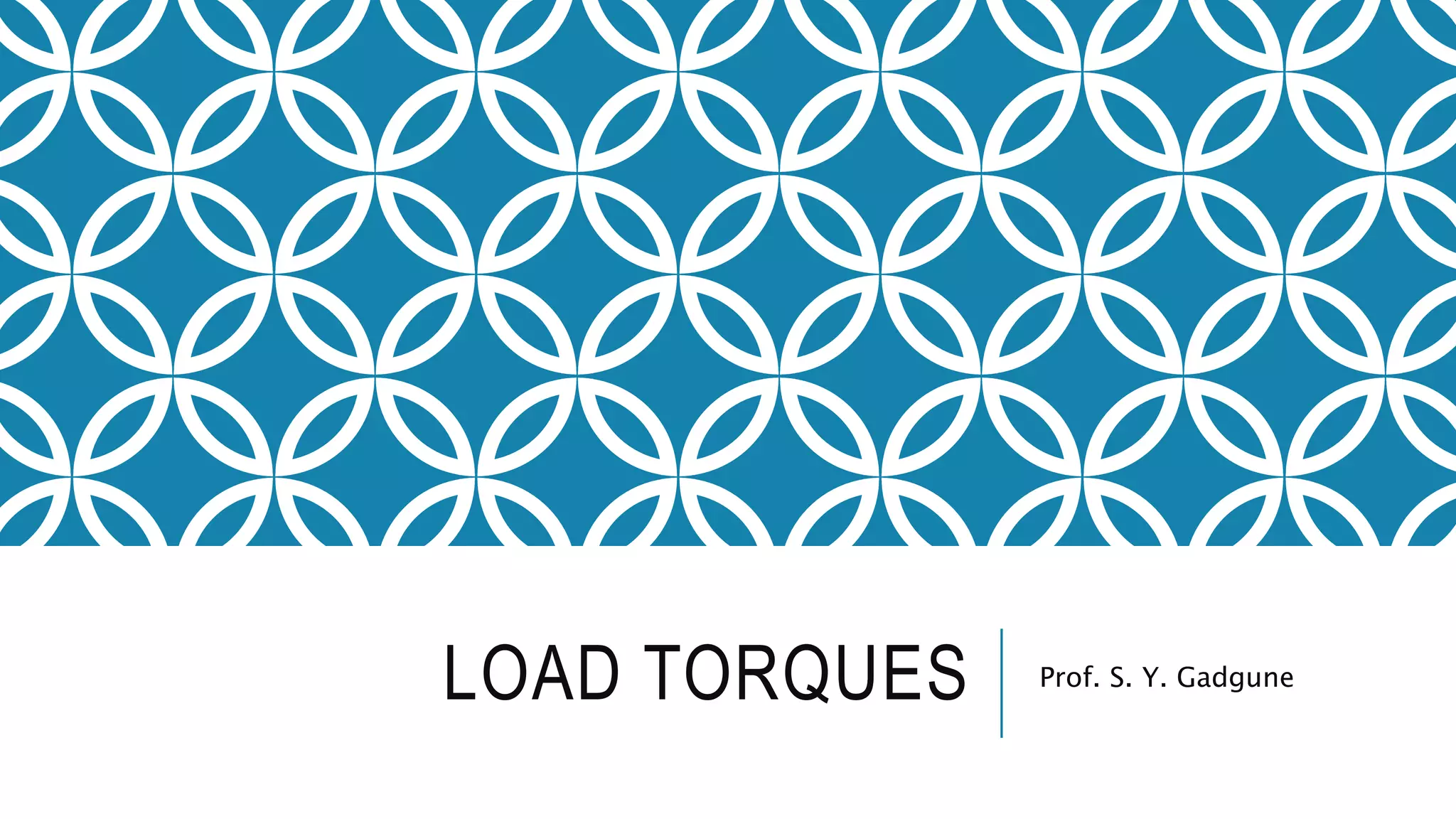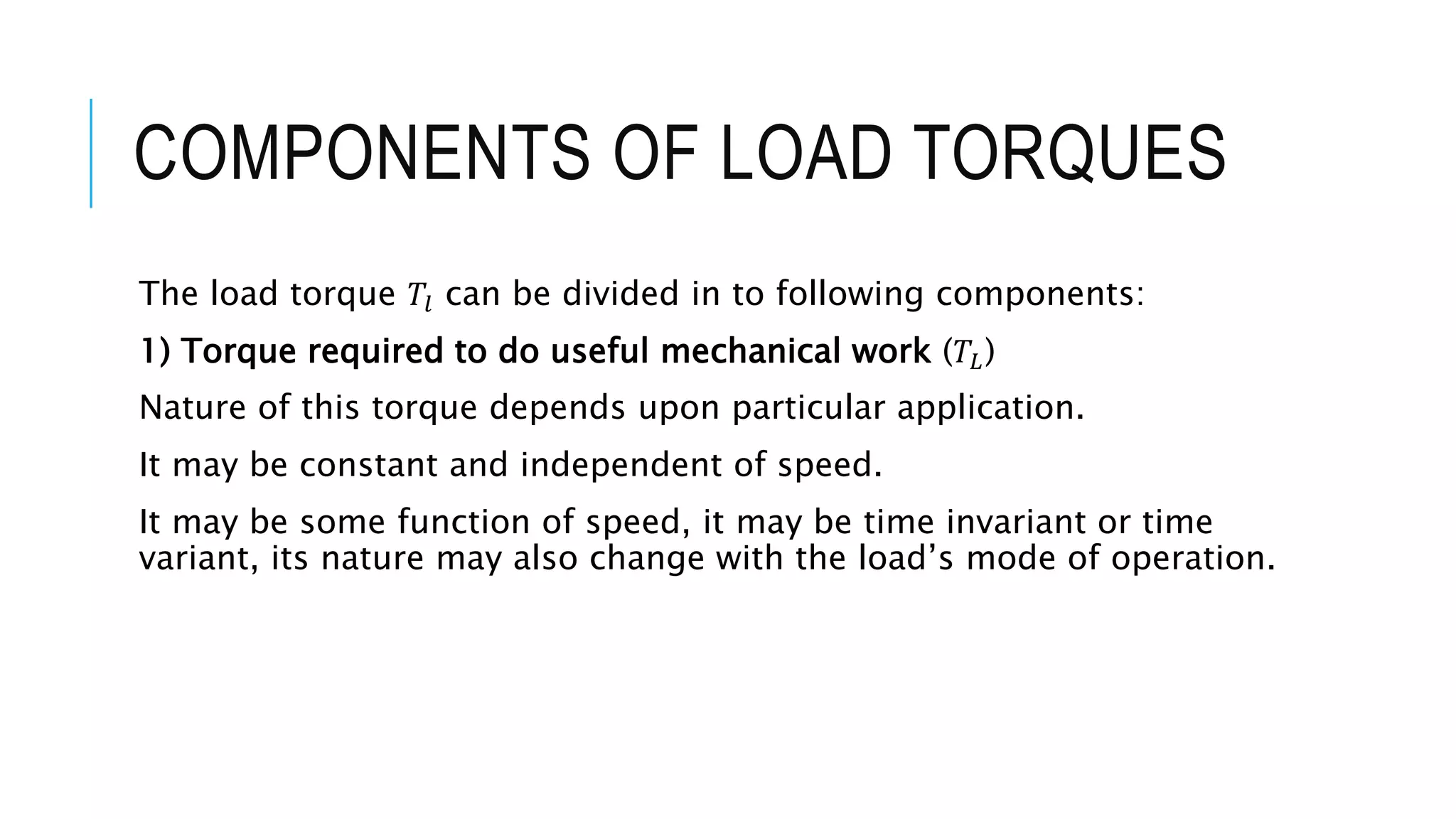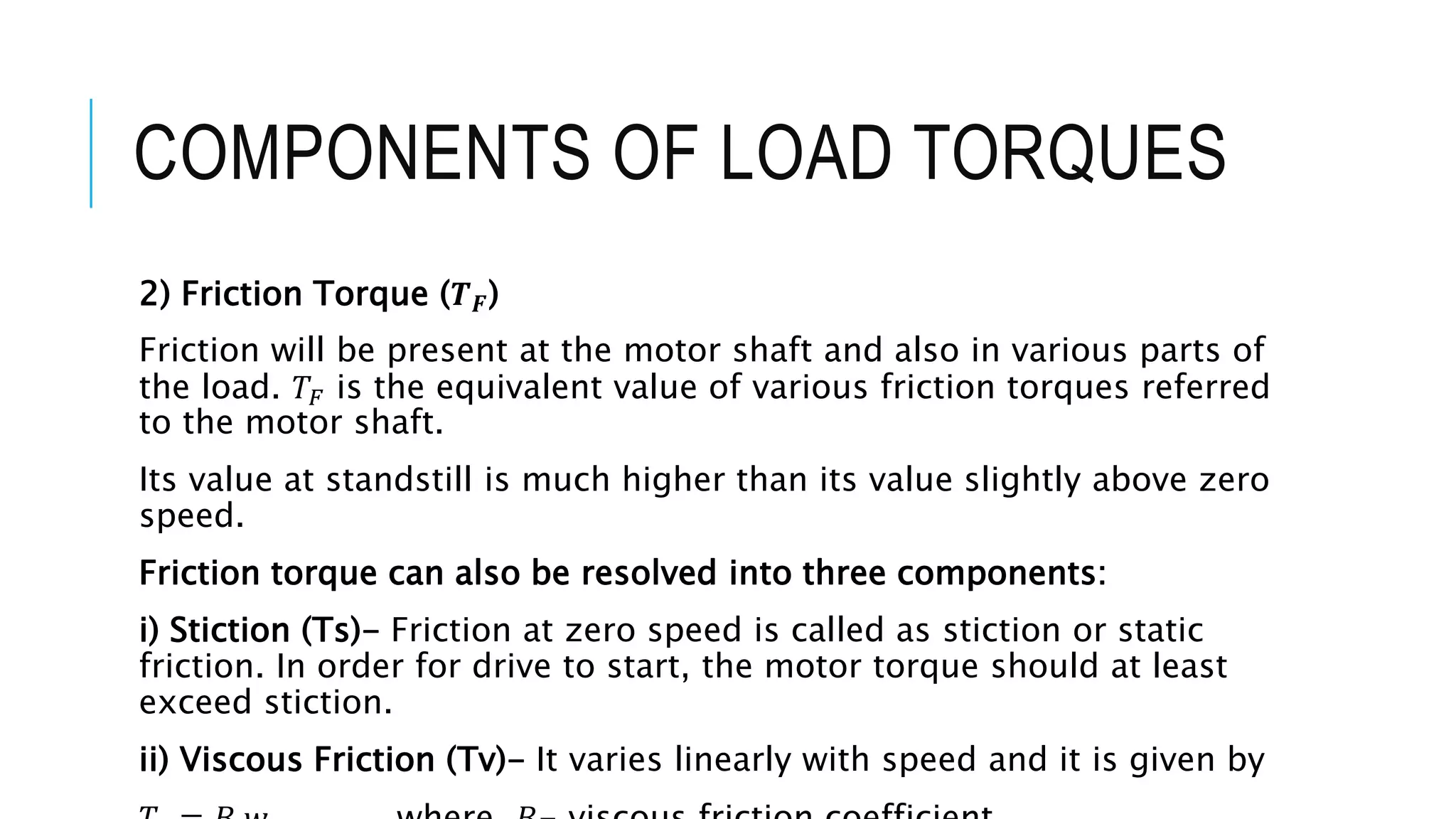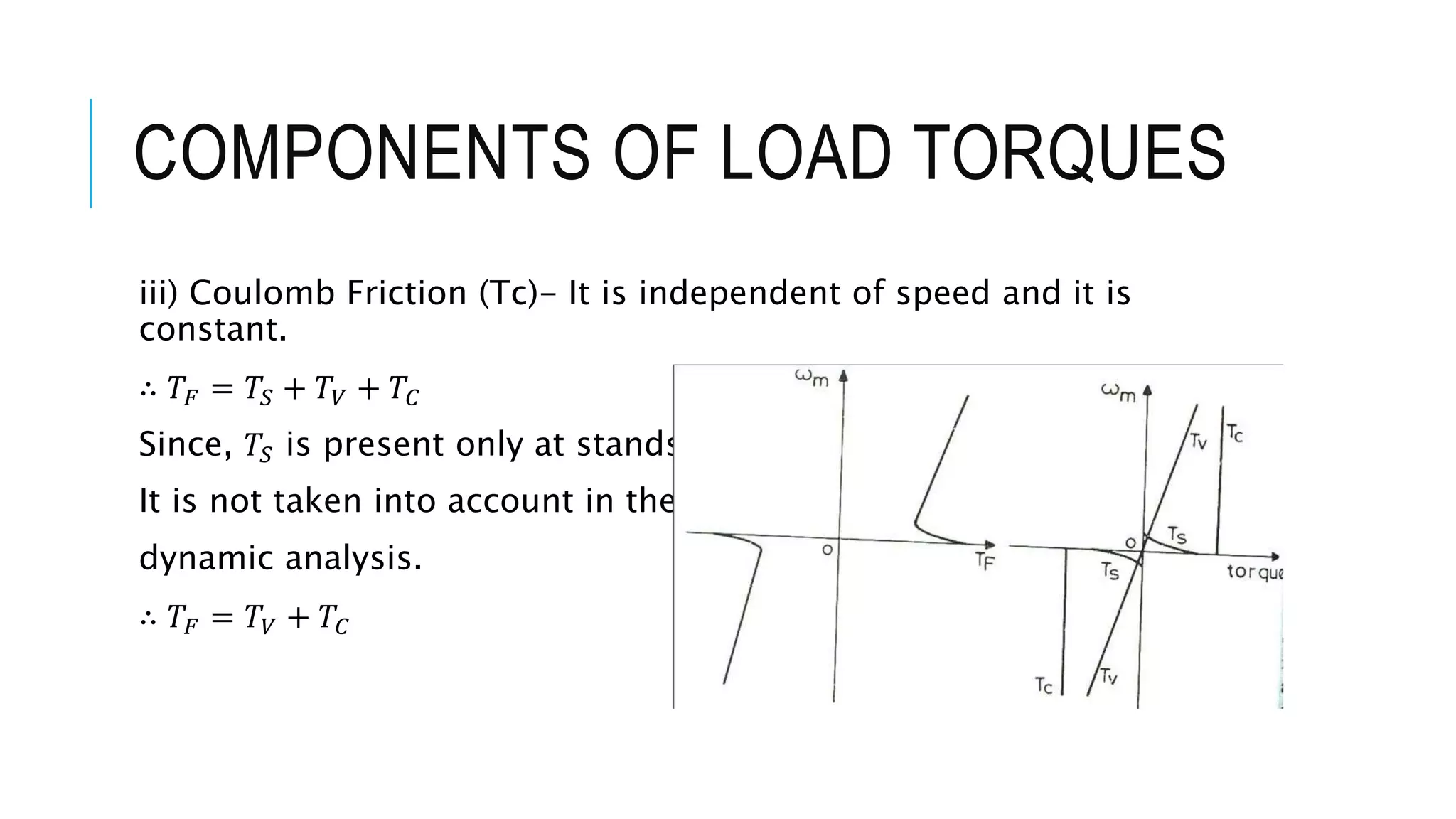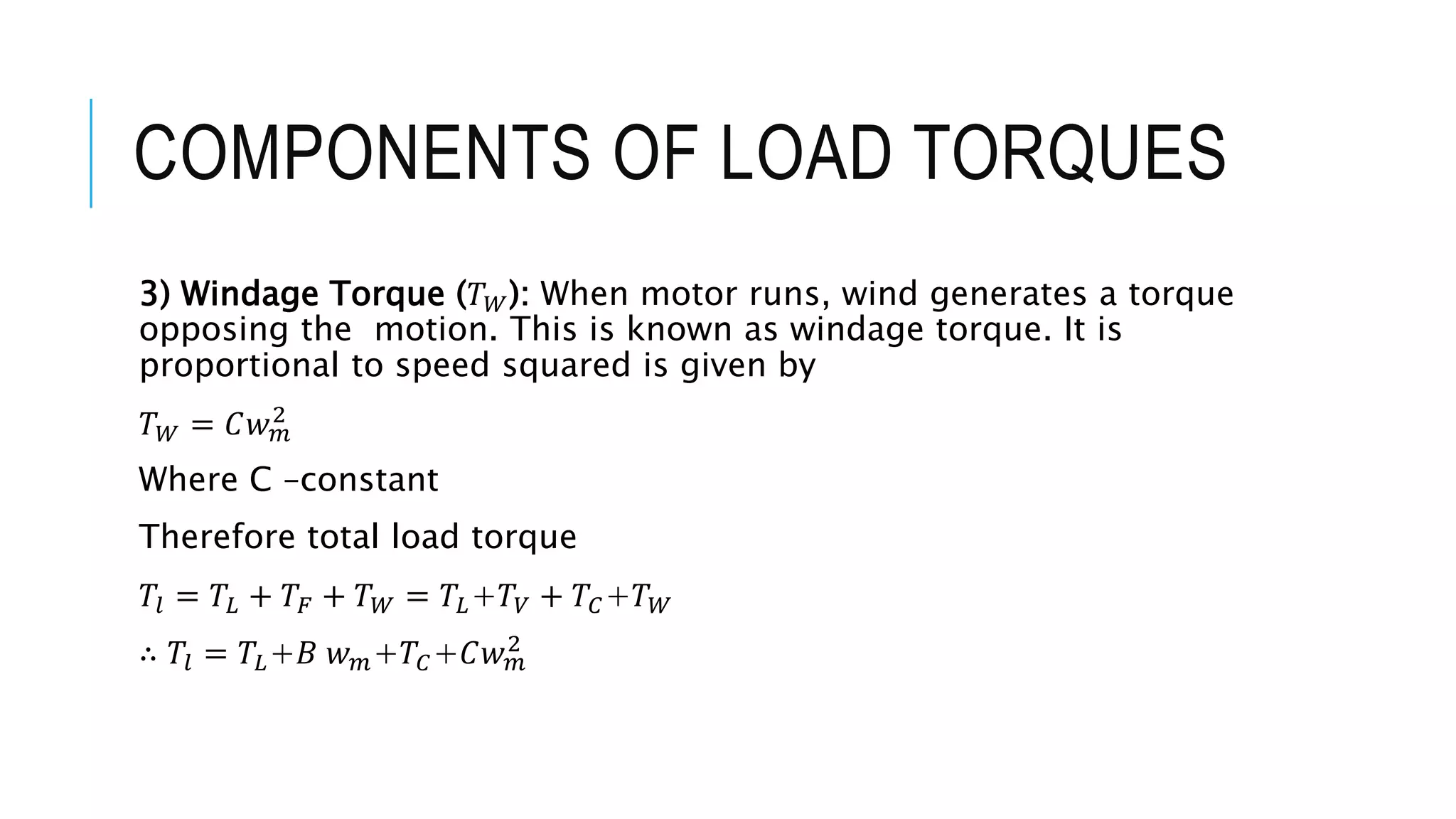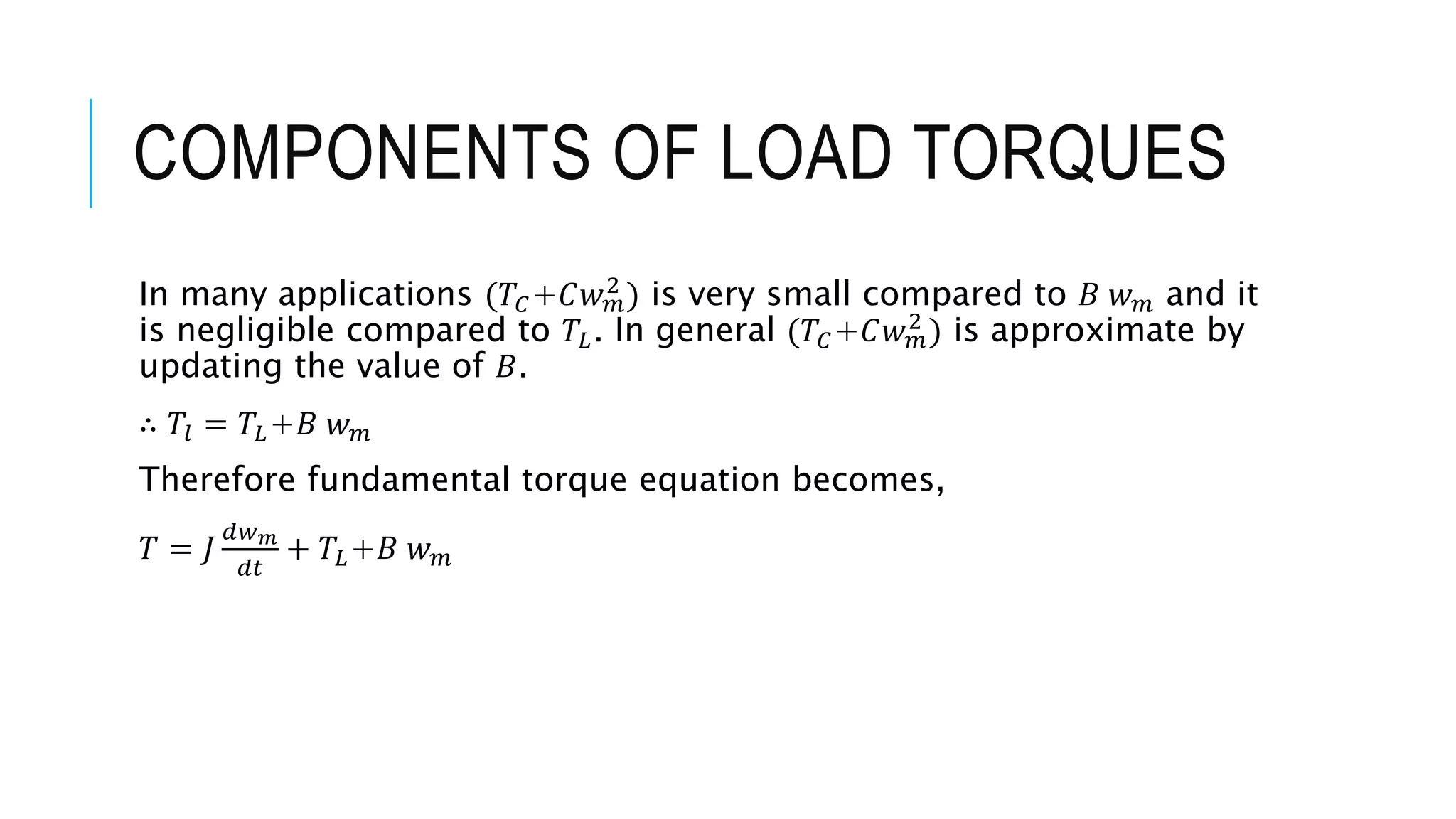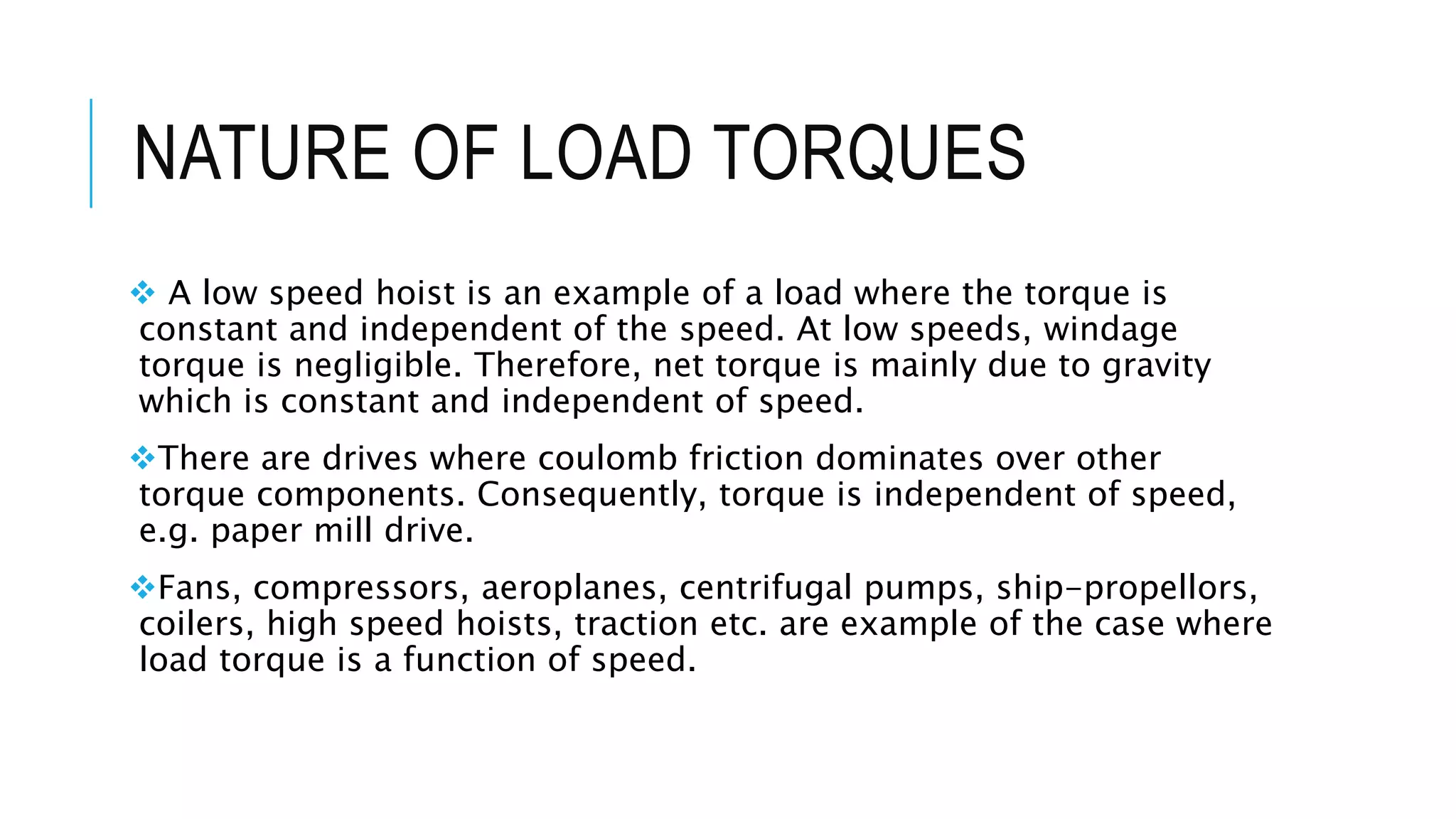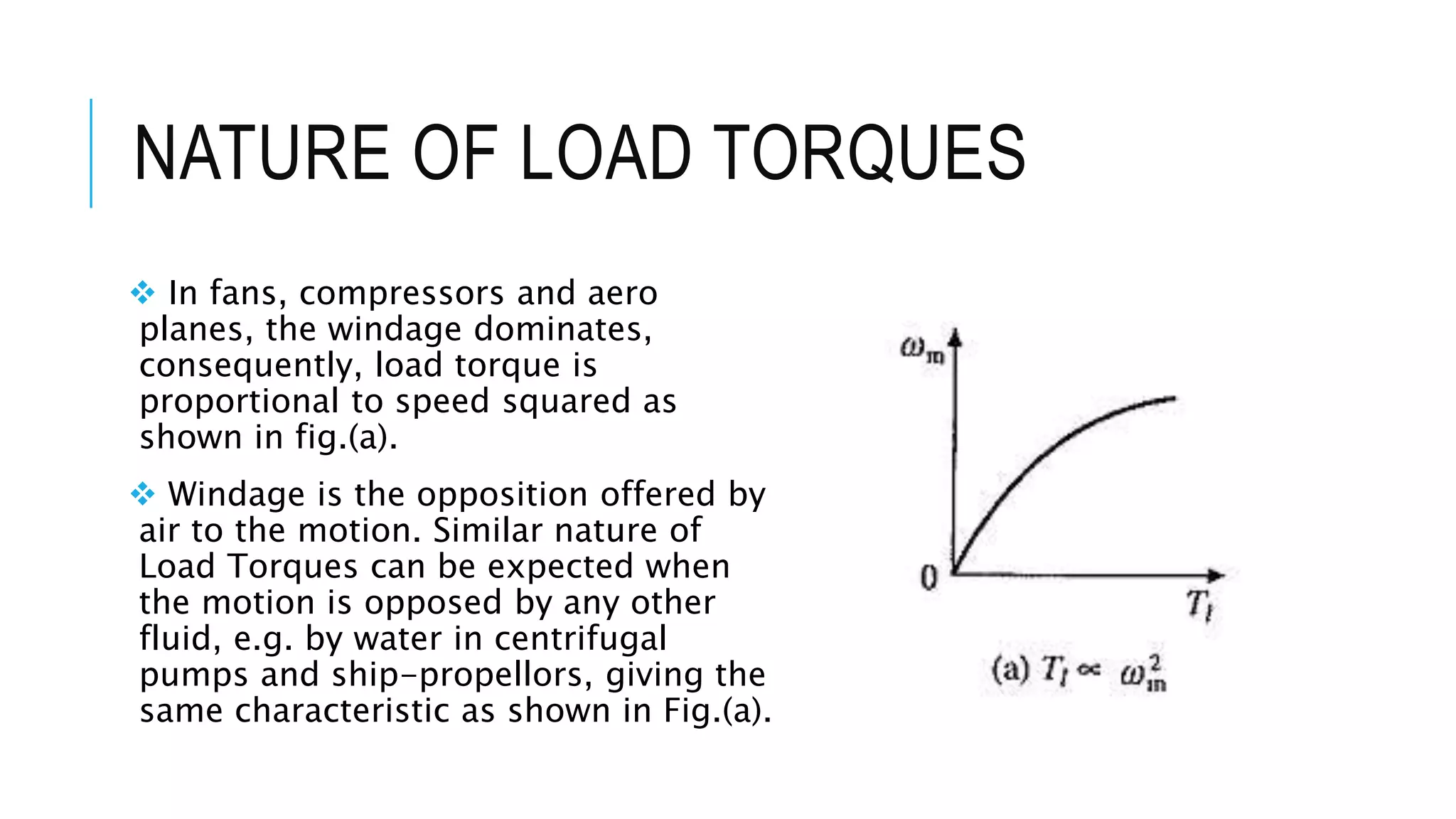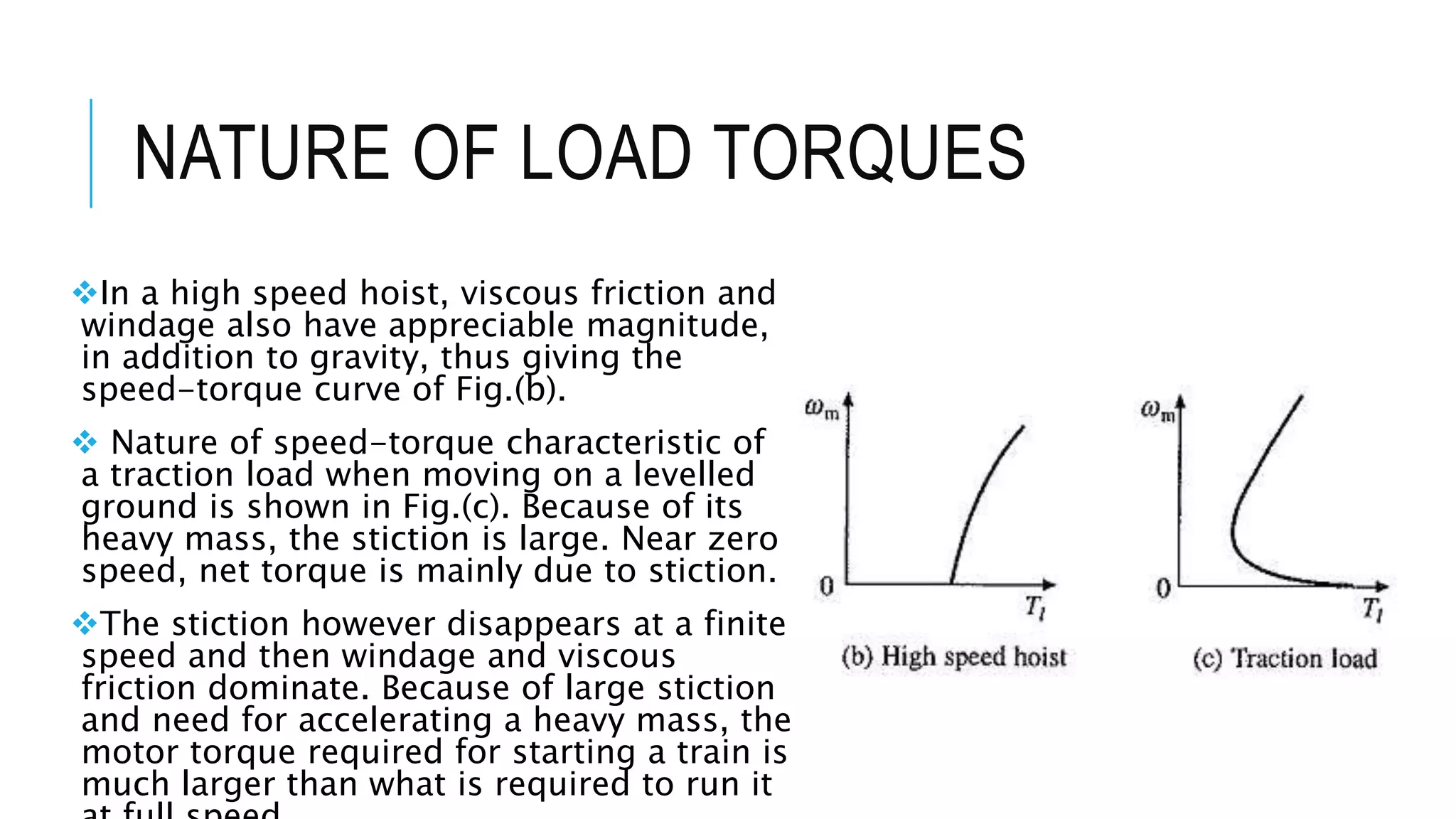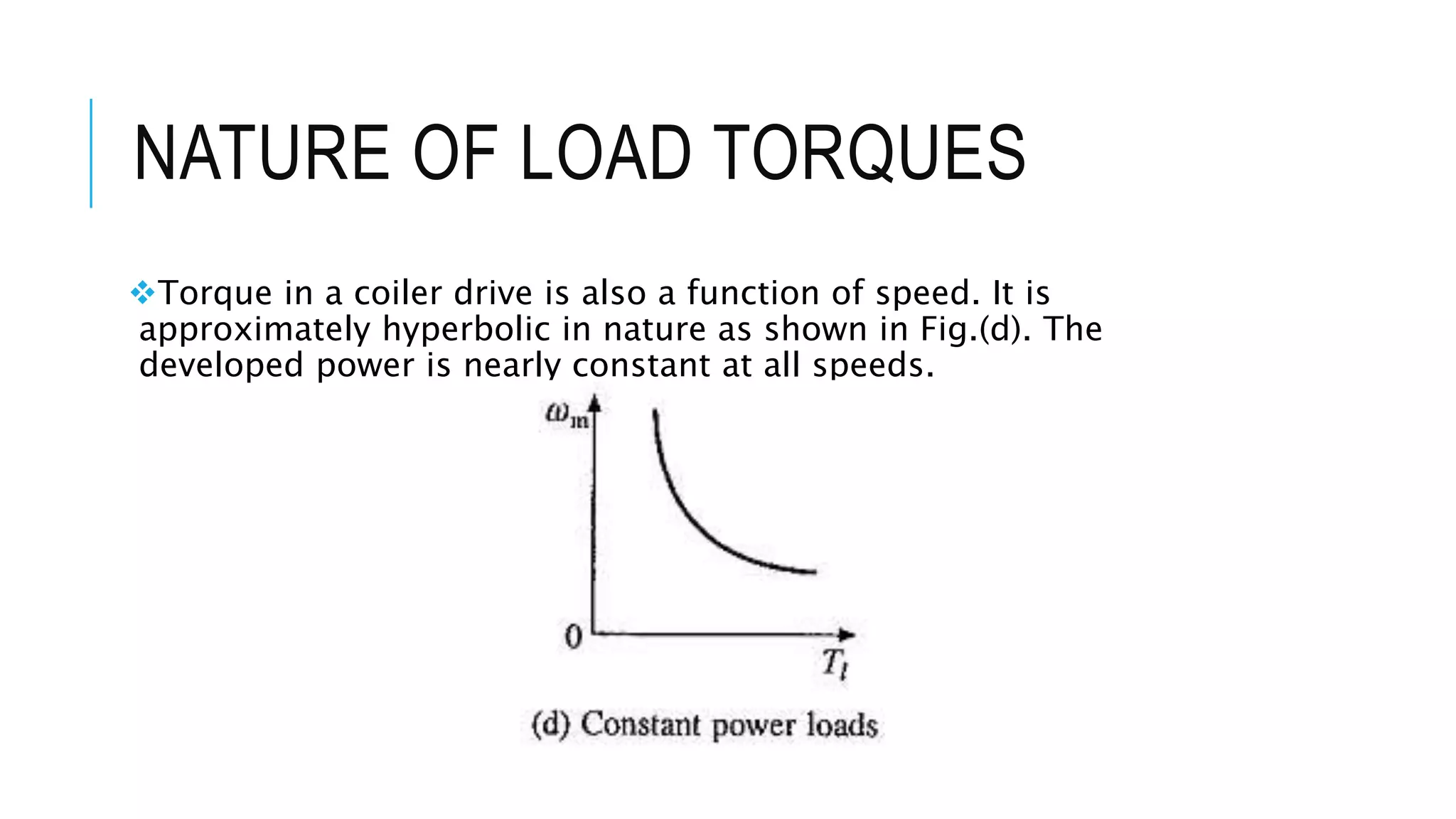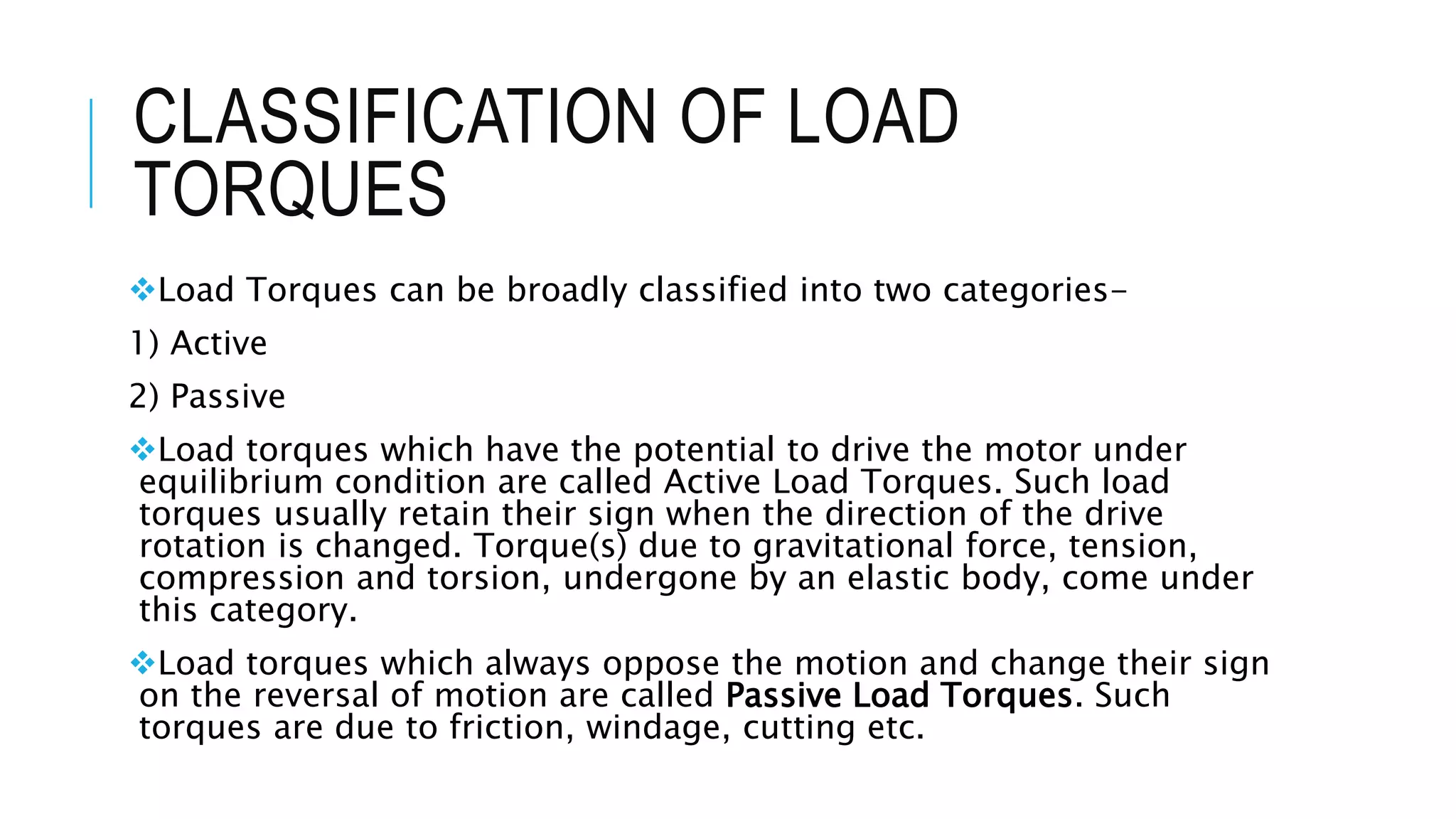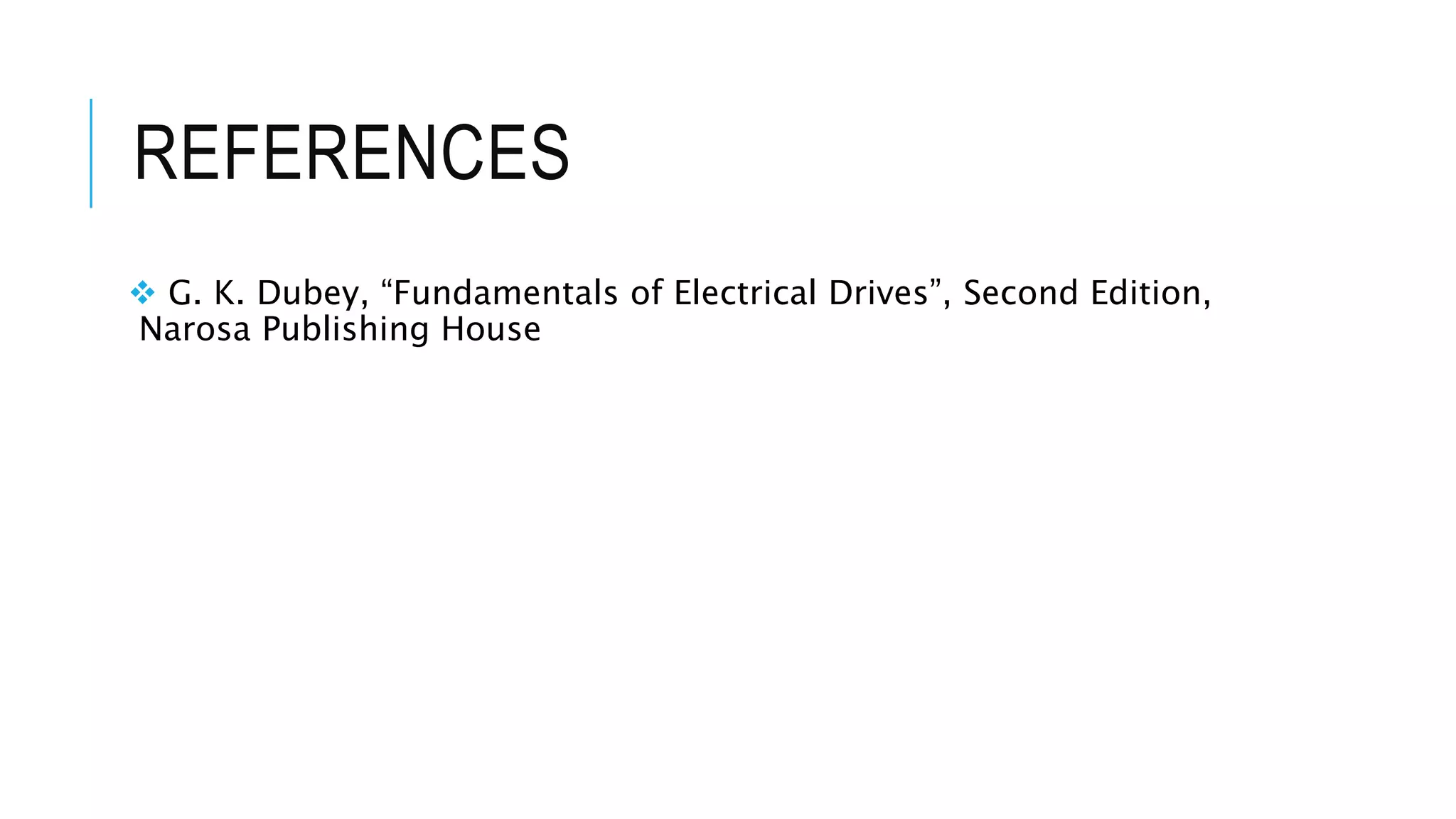The document discusses the different components that make up the total load torque on an electric motor, including:
1) Torque required to do useful mechanical work (TL), which depends on the application.
2) Friction torque (TF), which includes stiction, viscous friction, and Coulomb friction.
3) Windage torque (TW), which opposes motion and is proportional to speed squared.
The total load torque (Tl) is the sum of these components, plus a term for torque that is proportional to speed. Load torques can be classified as either active, which can drive the motor, or passive, which always oppose motion like friction and windage. Examples of different
